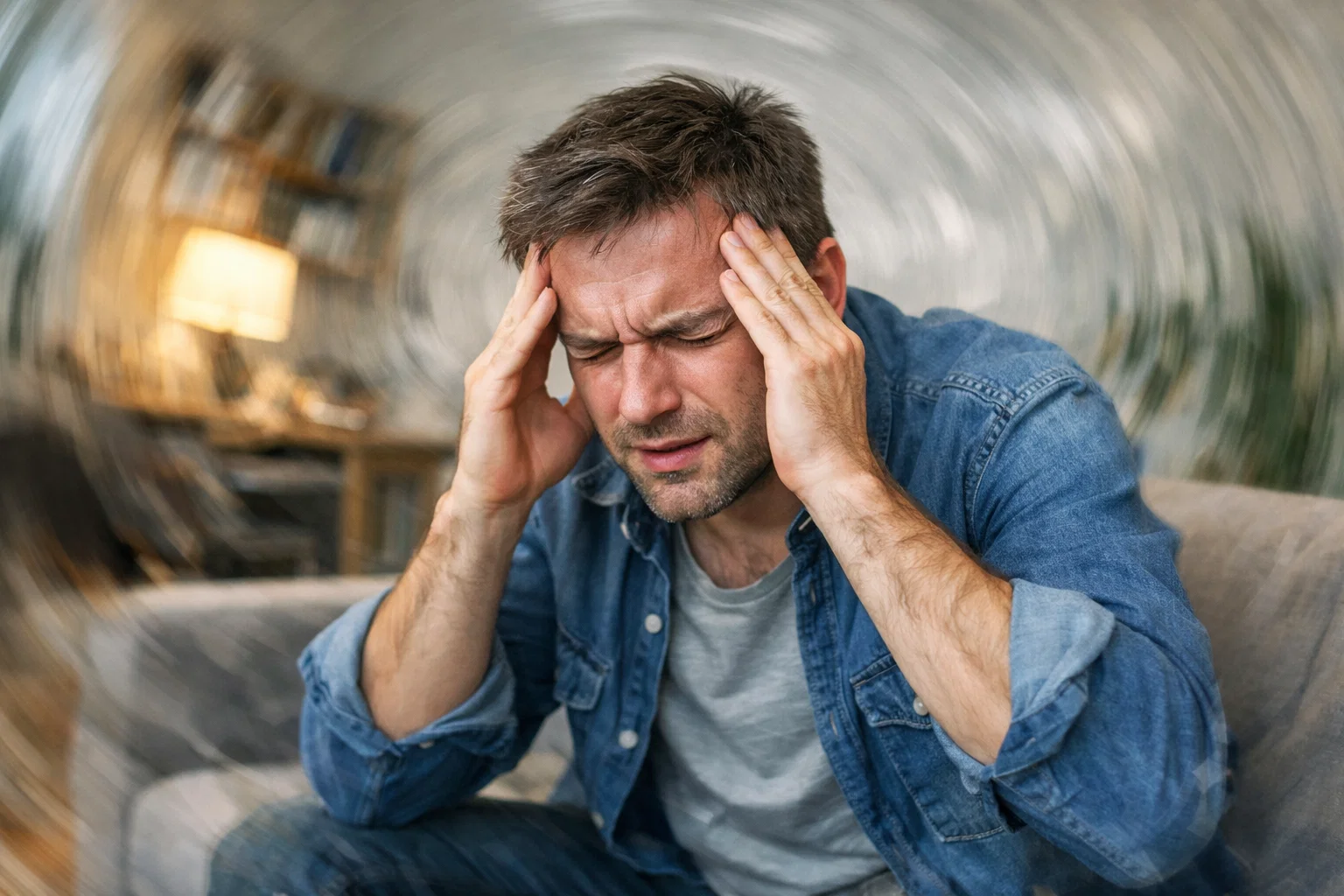
Head migraines are not like a headache. While headaches are caused by contractions of the muscles between your head and neck, migraines appear at the front or side of the head. The pain is excruciating, lasting for hours and even days on end. Because of the symptoms that come along with experiencing a head migraine, it is disabling to the person – causing them to miss out on daily activities and work. In some cases, depending on where the person is at the time of a head migraine, it can be dangerous.
How to “Read” Common Head Migraine
There is a chance you can “read” a head migraine before a head migraine attack happens. Oftentimes, you can see an aura developing that blocks parts of your vision. Other times it can feel like a headache. To determine if you have a head migraine and not a headache, it is best to be familiar with its most common symptoms.
While experiencing an aura associated with a head migraine, you may experience symptoms such as:
- Loss of vision
- Trouble talking
- Flashing lights, zig-zag, or wavy lines
- Hearing sounds that aren’t there
- Weakness or numbness on one side of the body
- Uncontrollable movements
During a head migraine attack, the symptoms can include the following:
- Aura
- Dizziness
- Loss of appetite
- Extreme sensitivity to light, smell, and noise
- Nausea and vomiting
- Belly pain or upset stomach
- Fatigue
- Stiff neck
- Severe throbbing or pulsing pain
- One side of the head or eye is affected
- Blurry vision
- Lightheadedness
- Fainting may occur
Because of the sensitivity during an attack, the individual with the migraine may retreat to a complete “blacked out” room with no noise. Even the smallest amount of light and sound could worsen the symptoms of a head migraine attack.
After a head migraine attack is over, they may still experience the following symptoms up to 24 hours after:
- Elated, assuming no other symptoms are present
- Confused
- Sensitive to light and sound
- Dizzy
- Irritable
- Drained and washed out
What Can Cause Head Migraine?
Head migraines affect 12 percent of the population in the U.S., about 36 million Americans, affecting most commonly those who are 15 to 55 years old, as stated by the American Migraine Association. Below are a few things that can trigger a head migraine:
- Alcohol
- Caffeine
- Tyramine (food additive)
- Dehydration
- Flickering screens
- Second-hand smoke
- Tiredness and insufficient Sleep
- Shoulder or neck tension
- Loud noises
- Medications
- Stress
- Depression
- Hormonal changes
- Low blood sugar
- Jet lag
- Physical overexertion
- Poor posture
- Excitement
- Shock
- Chocolate
- Stuffy rooms
- Changes in temperature
- Bright lights
So now that we know a few triggers for a head migraine, what allows even the smallest of triggers to bring about a head migraine? Not everything can be avoided, and what is the difference between someone who experiences these often without bringing about a head migraine and someone who gets a head migraine from one of these triggers right away?
While head migraines still remain a bit of a mystery there are some possible causes, including:
- Irregularities in the brain’s blood vessel system (or vascular system)
- Brain chemical abnormalities
- Irregularities in nerve pathways
- Central nervous disorder
Most Common Reasons Adults Have Head Migraine Problems
Adults can experience migraines while going through hormonal changes. Other reasons behind their migraines can be from changes within the body from additional stress it has taken on throughout their years.
The most common triggers for adults with head migraines can be from stress, environmental changes, and poor dietary habits. Head migraines can affect their jobs and their ability to do simple daily tasks, causing an adult who experiences constant head migraines to begin suffering from even more stress and depression – which also increases the chances of their head migraines to occur even often.
Most Common Reasons Children Have Head Migraine Problems
When a child is first born, their top two vertebrae of their spine could press up against their brain stem (a natural thing to occur during the delivery), causing issues to arise in their central nervous system. A child may experience head migraines from this. If not right away, additional stress over time could cause more harm on their body – causing them to be more sensitive to head migraine triggers.
A child does not always understand what is going on with their body and could possibly think everything they experience during a head migraine is normal, so it is important for their parent or guardian to observe and help them by looking for changes in their behavior and if they show signs of any of the above symptoms.
The most common triggers for a child may include stress from school or home environment and poor diet habits.
What to do About Head Migraine Problems
Most individuals only know two ways to handle head migraines: medication and surgery. What most do not know, is that even medication and certain surgeries can make the head migraines worse or not fix them at all. Not only are they unnatural to the body, but they do not always work – putting even more harm on your body that could become permanent.
There is a natural and much safer alternative that can tackle not only the symptoms of the head migraine (as medication and surgery tries to do) but fix the underlying cause. As stated above, all potential causes of a head migraine lie within our system. Upper cervical chiropractic, a natural alternative to help head migraines, focuses on the top two bones of the spine – where the brain stem, which controls the brain to body communication and the central nervous system, is located.
Can Upper Cervical Adjustments Help Head Migraines?
When the brain stem is compressed by the top two bones of your spine by an accident, birth delivery or awkward movement, injury, or even stress put on the body over time, it can lead to many complications in the body.
Some of the complications in the body it can create, are the actual complications that are listed under the possible causes of head migraines. This is because a misalignment to the bones surrounding the brain stem can disrupt your brain to body communication, blood flow, apply pressure on the surrounding nerves, and harm the surrounding muscles and ligaments.
Upper cervical adjustments help correct the misalignment to bring back proper brain to body communication, distribute proper blood flow, relieve pressure off the nerves, and relax the surrounding soft tissue so it can begin repairing and healing. Because of this, many patients who suffered from head migraines have reported they are now migraine free or have seen a drop in their occurrence significantly.
Diagnostic for Head Migraine Problems
An upper cervical chiropractor can give you a thorough valuation to see if one of the top two vertebrae of your spine are misaligned and causing harm to your body. They will be able to predict if the misalignment plays a part in your head migraines and understand which nerves and how much of the brain stem’s functions are affected. Since the brain stem is our most vital part of the body, it is important to take care of it and give it proper treatment to ensure your body does not inflict even more harm on itself.
Upper Cervical Chiropractic Treatment for Head Migraine Problems
Upper cervical chiropractic treatments are unlike general chiropractic. Upper cervical is very precise, using gentle movements to realign the most important part of your body. It is safe for all ages and is completely natural, without the disturbing side effects of medication and surgery.
With many patients reporting head migraines being gone or diminishing greatly in occurrence after only one adjustment, it holds to be a recommended treatment before medication and surgery. If you have already tried medication and invasive surgery, you’re not out of luck! Our brain stem plays a huge part in allowing our bodies to repair and heal properly, that even patients who use upper cervical treatment as a last resort have seen great results!
If you or a loved one is experiencing head migraine problems, an upper cervical treatment can help. By restoring the brain to body communication, releasing pressure off the nerves, and giving back proper blood flow throughout the body, an upper cervical adjustment has the ability to get rid of all potential causes of a head migraine by allowing your brain stem to function properly.







Leave a comment